






The Wanderer: 100 Things To Do In St. Augustine Before You Die
Amiyah Golden
Duval County Looks To Future Amidst Potential School Closings and Consolidations Mallory Pace
Living To Work Is No Way To Live: Contrasting Workplace Culture In America vs. Europe Mallory Pace
Florida Cowboy: Living Off Land Ambar Ramirez & Carmen Macri
EastCoast Oysters Bar Brings The Oysters To The People Emily Cheyne
Wolfson Children’s Hospital Christmas In July: A Festive Summer Tradition
Angelica Santini Hernandez
The Lore of Florida Man








KERRY
AMBAR






SHELTON


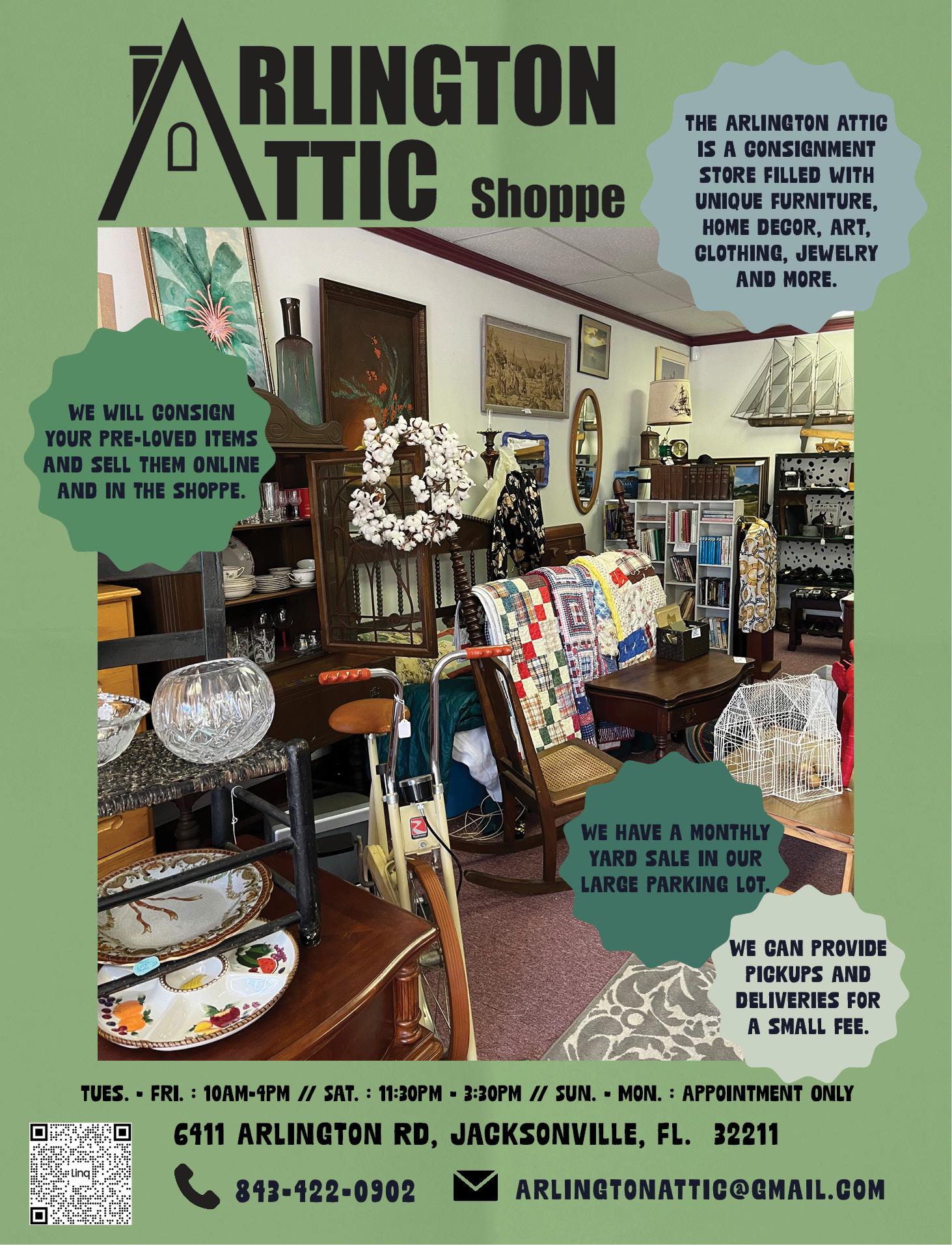


To the North Florida Green Chamber for promoting Plastic Free July. This organization does some amazing things in our community. They promote Solar Collective, work with the Clean Fuels Coalition and focus on Sustainability too. Check them out at northfloridagreenchamber.org

To Senate Republicans for blocking the Reproductive Freedom for Women Act. Specifically, to U.S. Senator Rick Scott and his attempts to strip away a woman’s right to make their own personal medical decisions. Here are a few of the things he has done that deserve a big brick bat:
• He voted against Amendment 4, keeping Florida’s abortion ban in place.
• He co-sponsored a national abortion ban that would put doctors in prison.
• He celebrated the Supreme Court’s Decision to overturn Roe v. Wade
• He voted against bipartisan legislation to protect access to contraception and IVF treatment.

To DONALD TRUMP’S “PROJECT 25” extreme and unpopular agenda! Google it. This insane radical playbook gives Trump unlimited power to use the presidency for revenge and retribution, making it possible for him to be a dictator from day one. In short, the plan would ban abortion nationwide, would raise taxes for the middle class while giving large handouts to billionaire donors, defund the government, do away with Social Security and would cut benefits to our veterans. This is just the tip of the iceberg. Do your research, it’s NUTS just like Felon Donald Trump.

Words by Ambar Ramirez & Carmen Macri






It may just feel like you are lying in bed doing absolutely nothing with your life right now, but you can call it going through a stage of introspection. How else should you inner reflect? While walking around? Mercury, the mind planet, entered Leo on July 2 bringing you a long month of self-work.
You’ve had the time to rest in your cocoon, Taurus, and the time to branch out and become the social butterfly you secretly are is here. But emotions are natural. If you start to feel frustrated and overwhelmed around July 15 when Mars and Uranus meet in your sign, focus on finding healthy outlets.
Jupiter continues through your sign all July long causing some emotional conflict, something you are quite used to. Rather than being a ticking time bomb for everyone around you, hop in your car and drive away. Keep driving and don’t look back. Honestly, don’t stop driving. Drive until you run out of gas and then start walking. Again, don’t stop. Keep going until you are so far out of society that you are simply a speck of dust on the radar.
Happy Birthday, Cancer! You’ve made it another year around the sun, and that is a feat of its own deserving of celebration. Over the next couple of weeks, you will feel adventurous and risky. Don’t be afraid to try something new and come out of your shell.
The month will start a bit more subtle than you are used to, being the center of attention and all. It is not until the middle of July that things begin to pick up for you, Leo, when Venus and the Sun enter your sign. And in pure Leo fashion, the spotlight will turn on and everything will be about you!
Have you been feeling a bit stagnant, Virgo? Don’t worry, that will all change this month. When Mars moves into your social 12th house on July 20, it will bring a burst of energy along with it. This burst of energy may propel your professional and personal life forward. But, as always, be careful what you wish for.






You’ve never been one too keen on making decisions, let alone the right decisions. Indecisiveness runs in your blood. Never wanting to settle on anything for fear of something better coming along. A sad life to live, no? The full moon in Capricorn on July 22 will cause you to have a bit of introspection; use it for the better.
Feeling very “woe is me” recently? That is to be expected. The new moon on July 5 has your emotions going haywire. Nothing seems to be going your way and the world is simply out to get you. Work troubles, relationship struggles, the whole nine yards. Maybe just pack up and move to a different city? What’s the worst that can happen?
Time to finally unpack all that deep-rooted trauma, Sagittarius. Both the new and full moon this month will call on you to unlock old forgotten doors – do some spring cleaning – and finally say goodbye. There is no reason to carry that baggage along for the ride; it can’t do good things for your back.
Teamwork makes the dream work, Capricorn, with a huge emphasis on communicating your wants and needs with your partner. How do you assume to run a fine-oiled machine if you expect others to read your mind? You tend to rely on “if you want something done right, do it yourself,” but let others lighten the load for you.
Stop trying to open a new door with an old key, Aquarius. This month is jam-packed with emotions ranging from high-highs to low-lows. Sometimes it’s best to take your hands off the (metaphorical) steering wheel of your life and let the universe guide you to where you’re supposed to be. In short, release control.
July has a lot of potential for you, Pisces. With Jupiter in your domestic sector, you will be in your element. Conversations will feel easier, plans won’t be so hard to make and every meal you cook will turn out better than imagined. Cancer’s new moon on July 5 is a sign of new beginnings for you.




Words by Shelton Hull
If you’re anything but stone-blind, the sight should be familiar by now: I’m talking about that purple van with the neon lights and retro wrap that drives around selling cannabis products, usually near bars and clubs because that’s where the action is. Of course, I was instantly curious, and so were many of you, the readers, who’ve reached out many times (usually while standing in 5 Points on one of those Saturday nights you’ve all heard about) to ask, in the words of Jerry Seinfeld, “What is the deeeeal with that?”
It’s actually quite an interesting deal, indeed, and here’s the story, straight from the horse’s mouth. That’s a colloquialism. He’s not a horse — he is 100% people and real nice people, too.
Miami Vice Mobile stems from the collaboration of Pedro Soler who launched the brand in 2021. “We brought the truck up from Miami, with my partner, Julio Lanzas,” said Soler. “We had a couple of mutual friends before, and definitely it was a matter of just coming up and checking out the vibe.” He expanded into Jacksonville about nine months ago, as well as Gainesville.
It’s a gorgeous vehicle that draws the eye, and its purpose is self-evident. While their brand is clearly inspired by the iconic NBC series, “Miami Vice Mobile” has no distinct connection to the popular weed strain, although they presumably will, soon enough. Now, to answer the main question you have, which is about the actual products.
It is not a licensed dispensary, so its sales are currently limited to Delta-8, Delta-9 and CBD fare, as well as cigarettes and cigars, etc. “A lot of products are hemp-based, but they do have a level of THC to them, which is all at legal standards. It’s a more relaxed version of the regular substance,” Soler said.
They do a perfectly healthy business, so to speak, with their existing stock, mainly because of their diligence in coming to the customer. It helps to have a friendly disposition during chaotic times. Speed and convenience are epicentric to the brand.
For example, I did the interview while he was parked in front of Hoptinger on the busiest night of the week.
Buying a pack of cigarettes would require walking into Rain Dogs, which was full for karaoke with Elyse Berlin (best in town, recommended), then going to the machine and paying $11, but only after you’ve gotten the bartender to give you exact bills and flip the little switch to activate the machine, standard practice at any bar. By the time you light up, that’s five minutes, minimum. You could walk to Smoke City around the corner in less time, but it’s closed. You could walk to the Shell station and back in 10 minutes, but not by yourself, and not at all if you’re a girl. So, for cigs, blunts and wraps, they’re a life-saver, sometimes literally. And who’s got the dexterity to roll joints while standing up drunk? It ain’t me, it ain’t me.
As you could pretty much guess, the real endgame begins next year. Polling data strongly implies that Florida voters will fully decriminalize on the November ballot with implementation starting in spring 2025, and the governor’s half-hearted efforts at resistance have fared about as well as his presidential campaign. (Spoiler: I still think he’s gonna be Trump’s running-mate, but we’ll save that for the reporters who are already on their payroll.) “Like everybody else, we’re just trying to figure out what the regulations are going to be like,” Soler said. In theory, by this time next year, we will have seen a massive expansion of the state’s cannabis industry across all sectors, especially in retail.
Business aside, Soler is generally impressed with Jacksonville, and it gets his endorsement. “It’s a lot more relaxed than Miami, slower-paced, but there’s still a lot of breathing room. Definitely a great place to visit. “It’s been really fun, getting to meet a lot of people and see a lot of the crazy stuff in the nightlife,” he said. With the city’s population expanding faster than ever, ambitious young men like Pedro Soler are a great example of the kind of folks we’re drawing into this community, and that trend is likely to continue for years to come.















One of the many reasons I love our great city of Jacksonville is the proximity and access to a variety of experiences: I can hop in the car and enjoy the springs, beaches and historical landmarks to tantalize my curiosity.
I grew up here, so I feel like my wonders have grown stale over the last couple of years, but I’m also entering adulthood, so my explorations aren’t limited to repetitive school field trips and watered-down lectures about history but unlocked gems in the Jacksonville area and beyond. And though it’s only a hop, skip and jump away, St. Augustine is sometimes a forgotten neighbor. Fortunately, author Amy Angelilli, author of “100 Things to do in St. Augustine Before You Die” has aided in the unearthing of numerous activities found beyond the Duval County line.
Words & photos by Amiyah Golden

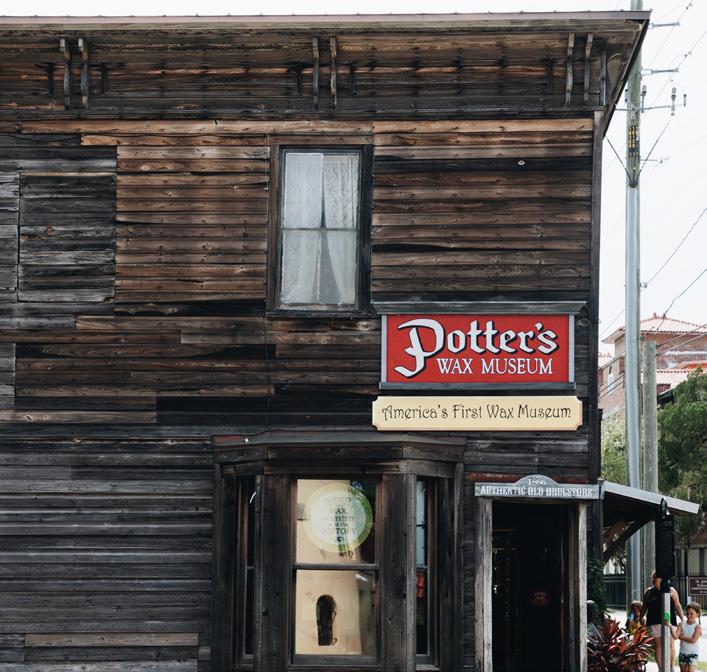

St. Augustine is known for its rich history, but its vibrant people, cuisine and present-day activities can also make it the perfect day trip or weekend getaway.
I’m no stranger to the city as every pupil begged their parents to sign permission slips to crowd into yellow school buses to see Fort Castillo de San Marcos. It was cool the first two times but got old quickly (no pun intended). I’m a huge history nerd so little me wasn’t receiving the full picture, making it unamusing by the fourth time I visited. I was led to believe that the fort was all there was to the Oldest City, but as I got older and procured my driver’s license, allowing me to soar like a free bird (or whatever Lynyrd Skynyrd said) and opening my eyes to sites unseen and a whole new perspective.
But if you’re looking for a straightforward directory for the places to be, Angelilli has got you covered. I highlighted some places I’ve never been, as well as my favorite destinations on my latest trip to St. Augustine. From food and drinks to spooky finds and serene nature spots, “100 Things To Do in St. Augustine Before You Die” provided me with the perfect itinerary for a cloudless (but extremely hot) day trip.
I love food — this is no secret — so obtaining the best eatery was critical to ensuring I wouldn’t end up hangry. Angelilli features numerous suggestions with seemingly endless fare from high-end options to affordable bites. Conch House Marina Resort and Caps on the Water were, of course, mentioned, but my interest was more piqued by Sarbeez and Cousteau’s Waffle and Milkshake Bar. I’ve heard of both through Instagram reels and aesthetic photos floating on the internet but chose Cousteau’s.
The historic city bustled with travelers, laughter from children, and a mixing pot of culture. Good coffee also solidifies the success or downfall of a city for me. With cute coffee shops nestled in unsuspecting houses and alleyways, it made the experience more captivating.
My favorite coffee shop is the Kookaburra (and my mind will not change on the matter.) Since my trip was limited to a day, I cheated and went to my favorite coffee shop, The Kookaburra (and, no, my mind will not be changed).
Turns out, I was right in the matter because the most perfect cup of matcha touched my lips and in that moment, I contemplated moving to St. Augustine just for the promise of The Kookaburra’s matcha every morning.
Angelilli compiled other suggestions which I’ll be sure to pursue on a longer trip.
Brewery culture is alive and well in St. Augustine as well, as in, you can’t miss one even if you tried. Many breweries offer more than just pilsners, IPAs and stouts; they offer an entire experience where you can gather with friends and family to listen to local bands live at places like as Dog Rose Brewing Co. If you want to geek out on history while drinking beer, you can schedule a history tour on the makings of beer with St. Augustine Craft Beer and History experience. My taste is changing slightly, and I enjoy a good cocktail over a beer so places like The Tipsy Duck Parlor, Prohibition Kitchen and The Tini Martini Bar hit the mark for me.
With the insane heat we’ve been experiencing, drinking wasn’t in my best interest this day so, the water was calling me. Cruising down A1A with a killer playlist is listed as self-care for me. That cruise often leads to one of my favorite state parks and beaches, Anastasia Island. I’m able to relax on a spotless beach or paddleboard. Depending on the day, I’m able to boat to the shoreline and tune out cares and worries. Anastasia Island has truly become my safe space and Angelilli stamps it as an “Award-Winning Natural Experience.”
Long days spent being kissed by the sun always warrant a sweet treat. Angelilli proposes that I “Get [my] Willy Wonka on at Whetstone’s Chocolate” a family-owned chocolate shop that offers a tasting tour.
Angelilli makes this choice hard with a compiled list of other dessert options — making this indecisive girl right here sweat. I use my trusty choice wheel to decide where I go in this matter. Landing on Mayday Ice Cream, and I’m not mad at the decision because I am a proud stan of the local ice cream company.
While this brief trip didn’t allot the time to experience everything that Angelilli recommended, it made my exploration a lot less stressful having the keys to the city in terms of guidance. I can attest to many of the suggestions with my personal experiences, but you’ll have to read the full book for yourself to pick out your favorites.

Words by Mallory Pace
Duval County school officials are weighing the idea of closing more than two dozen public schools as they’re facing a $1.4 bill ion budget overrun, leaving many families and parents concerned over the future of their children’s schools. Conversations between officials and residents are still ongoing, but the outcome is appearing less and less ideal as plans progress.
Back in 2020, Duval County voters approved a $1.9 billion budget in public funding for improving school maintenance and implementing new technology through a half-cent sales tax. The district’s master facility plan states that pre-pandemic industry standard costs for new construction was used for new build projects and all planning factors were reasonable — prior to the pandemic. The original goals and intended uses of the money, as outlined in that master plan, were to “address facility age, decrease excess seats, create safe spaces, remove portables, and increase utilization.” In June of 2022, according to News4Jax, it was estimated that roughly $65 million from the tax was already earmarked for school security upgrades and infrastructure projects.
By the end of 2023, that $1.9 billion agreed upon in the 2020 election for school repairs turned into a projected $3.9 billion, as reported by “The Florida Times-Union.” The school district’s master facility plan initially outlined 180 separate projects, including building 28 new schools — the pressure to meet those goals and expectations may have been somewhat underestimated in its original planning. According to a construction update prepared for Duval County School Board members, “the COVID-19 pandemic severely disrupted global supply chains and construction, leading to materials shortages, cost increases, and project delays.”
It was also reported that from 2018 until 2023, the cost of building an
elementary school in Florida rose about 21% statewide, averaging $264 per foot, according to data from the Florida Department of Education. Rutledge H. Pearson Elementary, which opened in August of last year, was the first school built with the sales tax money coming in at a cost of $40.4 million or 41% more than initially planned. On the Westside, Chaffee Trail Middle School is under construction and projected to cost $60.7 million, 57% more than first expected.
That brings us to now, more than $1 billion over budget and scrambling to find the best solution for as many as possible, but that won’t come without sacrifice. And district officials aren’t looking to increase or extend the sales tax, but rather in moving around, collapsing and consolidating schools across the county. Though nothing has been officially endorsed, several feeder patterns were presented to the board detailing the potential closing and transitions of schools. That proposal includes eight elementary schools in the Arlington area, including Brookview, Holiday Hill, Fort Caroline and Lake Lucina. In the Beaches area, it’s proposed that Atlantic Beach Elementary students be moved to Neptune Beach Elementary located about a mile away which would become a K-8; Seabreeze Elementary and San Pablo Elementary to move to Fletcher Middle, which would become a K-8; Anchor Academy and Mayport Elementary students would move to Mayport Middle as another new K-8 school.
These changes came recommended by consultants hired by the district. Duval County School Board Chair Darryl Willie was quoted in a News4Jax article saying that the School Board asked the consultants to come up with “any and every possibility to make sure we can create the most resources for our schools.” Low enrollment at some of these schools is part of how the decisions are being made. The consultants looked at optimal school size, meaning the ideal enrollment numbers needed to bring in more than what it’s costing. They found that an efficient elementary school should have 800 students, 1,100 - 1,500 for K-8 schools, about 1,200 for middle, and 2,400 for high schools. In 2019, there were 157 schools in Duval County averaging at around 82% capacity, but that’s not the case anymore.
Some of the elementary schools proposed to close do face low enrollment numbers compared to others. Atlantic Beach Elementary, one of the schools receiving overwhelming support to remain open, had 504 students enrolled for the 2023-24 school year. Neptune Beach Elementary, where students would be moved to, had 831 students enrolled last school year. Likewise, the two schools that would be moved to Mayport Middle were Anchor Academy, which saw 341 students enrolled last year, and Mayport Elementary, which had 406. Mayport Middle had 799 students enrolled.
Part of low enrollment numbers is due to an increase in opportunities for charter and private schools. On April 16, as parents and residents pleaded with board members not to shut down their children’s schools, Gov. Ron DeSantis signed a bill championing charter school presence in Florida. The legislation outlines the requirements and responsibilities for school districts to “turnaround” a struggling school into a charter. Duval alone lost thousands of public school students since the pandemic, but counties all across Florida have seen a sizable decrease in public school enrollment as families utilize their children’s educational choice options. The district’s master facility plan states that 61% vs. 39% of middle school students utilize choice options vs. attending their neighborhood schools, respectively. Those numbers have created what the district calls “middle school deserts”, and solutions are found in consolidation.
However, enrollment is up by over 7,000 in Duval’s neighboring district, St. Johns County, according to an article by Politico. As reported by Jax Today, when asked about Duval’s potential school closures, DeSantis said, “In Florida, the money follows the student and the family, it’s not embedded in a certain system or certain framework. And, so, the student and the family will be making those decisions.” Reshaping education in Florida has been one of DeSantis’ top priorities, for better or for worse. And although certain aspects make charter schools more appealing, they are often criticized for not being required to provide certain services to students, yet they are still funded by the district. Plus, many see the success of charters come at the price of traditional public schools, like we’re seeing in Duval and counties across Florida.
Low enrollment is one thing, but the proposed shutdowns include six “A”-rated schools like Fishweir, Lone Star and Seabreeze elementaries, alongside Anchor Academy, John Stockton and Atlantic Beach Elementary, which has particularly received an overwhelming amount of support from community members. Signs posted alongside the roads, in front of homes and in high foot-traffic areas are found stretched across from Atlantic to Jacksonville Beach advocating to save Atlantic Beach Elementary. An online petition was created to “Save our Little Pink School,” a nod to the building’s unique and notable pink exterior, that has garnered over 1,500 signatures and counting. The school was built in 1939, making it a significant part of the area’s educational history.
Many Atlantic Beach neighbors took to town hall and spoke before the city commission to express their disapproval for closing the school. Atlantic Beach Mayor Curtis Ford told attendees at a town hall meeting in April: “We’re not going away” and “Take Atlantic Beach Elementary off the list.”
It’s not just the closing of Atlantic Beach Elementary that people are upset about — neighborhood families across the district are equally feeling betrayed and frustrated at the idea of their schools closing. Parents of John Stockton Elementary, one of the A-rated schools at risk of closing, have raised suspicions regarding the district’s report of the school supporting its demolition. First Coast News reported that an analysis of the school included information about old air conditioning units from 1955 that do not exist (HVAC systems in need of repair are one of the reasons a school should be considered to shutdown). But parents took to John Stockton and couldn’t find any HVAC systems dating back from before 2005, so the information in the school’s analysis is inaccurate. This brought parents to question the extensiveness of which the district is actually investigating the schools they’re trying to close and whether this could be happening to others.
Since the news broke, there have been several public hearing meetings, where community members are given the chance to voice their opinions. According to News4Jax, former Atlantic Beach Mayor Ellen Glasser spoke at a school board meeting back in April, telling the council: “The purpose of your consultant’s review was to right-size our schools for a rich learning environment. We’re already doing that in Atlantic Beach,” Glasser said. “To say you’re pulling the curtains back on this project suggests there was a curtain up to start with. I would suggest there is a lack of transparency in terms of the schools on the list and that it appears to be outcome-based to save money.”
“Folio” put a post on social media asking people their opinion and feelings on the matter, to which many responded negatively. One user commented, “Mismanagement and charter schools are the problem. Fix that and up the pay for our community members that are teachers/school staff and stop attacking public schools …” Other concerns targeted the district’s recently hired superintendent Christopher Bernier, who first asked for a $350,000 salary but was negotiated to $320,000 — still $20,000 more than his predecessor, making him the fifth highest-paid superintendent in Florida. Comments surrounding this concern wrote, “Closing schools but the superintendent wants a raise? Hmmm,” and “Make superintendents a position we have to vote for, he’ll be gone in a second.”
As conversations continue, the district has stressed that no decisions have been made and that they wanted to hear from the public before doing so. According to a News4Jax article, Willie said the meetings have been successful and that “the district is listening.” These proposals remain fluid and tentative, and any approved action that may come in the future will most likely not take effect until at least the 2025-2026 school year. It would be incredibly disheartening to see so many beloved schools cease to exist, but the priority should remain on what’s best for our children and not on pinching pennies.
Duval County schools already suffer from a lack of attention and devotion, leaving it ranked No. 37 among school districts in Florida. If consolidating dozens of schools really is what’s best, we’ll only know with time. But as Jacksonville continues to grow and popularize as a city through focus on development and football legacies, it’s crucial for our schools to be a part of that success plan, because what’s a leading city without offering good education?
Words by Shelton Hull
You know, every month the inclination runs toward loading the column up entirely with stories from Florida, which is always possible. Heck, you could assign one intern strictly to peruse police blotters across our 67 counties and probably write a full column almost every day, such is our neighbors’ gift for shenanigans. But there’s just too much good stuff elsewhere for that, so instead we’ll just start in Florida, specifically in Boynton Beach, where a local Target customer was busted on 25 counts of larceny and two counts of fraud for switching out tags to scam scanners in the self-checkout lane. (By the way, “Scam Rap” is a thing, and it slaps.) Of course, that happens all the time, but this dude is maybe going to prison for stealing $1,334 (and 99 cents, that’s crucial) worth of Pokemon cards. He should NOT tell anyone that!
Moving north, a young couple in Lake Geneva, Wisc. were having an outdoor wedding when a tornado ruined it, and almost ruined them, tornados being famously unsentimental and all. Thankfully, no one was hurt in any of the severe weather that hit the area that Saturday afternoon, but the entire wedding party was forced to take shelter in the basement of a resort that just happened to be hosting a family reunion. After the power went out, a basement full of strangers sang Ed Sheeran’s “Perfect” while the couple danced in the light of camera phones. The resulting viral video should cover the cost of the wedding and the honeymoon.
The entire Hell’s Angels chapter in Bakersfield, Calif. was arrested recently on conspiracy to kidnap, rob and assault rival club members, but that’s not funny. Instead, we’ll talk about a police officer in Berlin, fired for filching cargo while responding to a truck accident. The plunder he pilfered was, in fact, approximately 396 pounds of cheddar cheese, which to be fair would have likely spoiled on the roadside anyway. It’s extremely rare to hear of cops getting fired who didn’t actually deserve it, but the Germans take abuse of power very seriously, for obvious reasons. But the bitter irony in this whole affair is that the officer in question never got to try the cheese, because he’s lactose intolerant. (If you know what brand of cheese it was, plz advise.)
Speaking of food, the quality of airline food has fluctuated over time. It was a fundamental trope in standup comedy for decades, and remains so even despite significant improvements in quality across all price ranges, to say nothing of what’s available at airports, like our own JIA. But this may be the last joke ever: the food on a Delta flight from Detroit to Amsterdam was so bad that the flight itself had to be diverted to JFK airport in New York. Some mistake in storage spoiled the food, and you can’t take 277 people across the Atlantic Ocean on an empty stomach. The delay added 16 hours to a flight already schedule to last for eight, but the food was great.
This column was on its way to press when Bruce Hamilton of WJXT reported on a Chinese man who got busted at customs with snakes in his pants, so of course we needed details. This clearly fearless fella was “intercepted” at Fultan Port in Shenzhen with six canvas drawstring bags duct taped to his body. Imagine the way one might smuggle cash, but snakes–exactly 104. The species were bullsnake, corn snake, milk snake, western hognose snake and Texas rat snake, most being non-native, which explains all that bother. The snakes were non-venomous, but who cares?





Amiyah Golden

Jacksonville’s vast landscape encompasses far more than just Downtown and the Beaches — while notable landmarks remain faint in comparison to all the city has to offer.
History winds and turns throughout the city all the way to the Beaches with establishments holding true to their visions throughout everchanging infrastructure and culture. And it all comes together at VooSwar.
A shining example of what just one person can do to improve the city, The VooSwar is the brainchild of a Beaches pioneer, Earnest Davis (better known as Mr. Earnest or Mr. E.) who wanted to create a space for all walks of life to come together. Building The VooSwar by hand in the 1960s, Davis had more to contend with in making his vision come true than a lack of labor. At the time, the Beaches were separated by skin color and racial tensions were high. Somehow Davis created a place where societal norms did not exist, where sailors of all races and backgrounds came together to eat, drink and laugh.
This sentiment holds strong today with VooSwar still upholding the values of the late Mr. Earnest as a gathering place for all.
You may have frequented the VooSwar back in the day like my grandparents or you’ve never even heard of the beacon, but I compose this to acquaint you with the building on 51 Robert Street. Holding true to serving guests good food and drinks, VooSwar has also made headway keeping up with the times and customer demands, adding live music, comedy night, EDM night, reggae night, Trivia and more – emerging as the space to be.
If you read any of my other articles, you know I like to put the community on game (I’m tired of hearing complaints about nothing to do) but it’s because we tend not to venture to unfamiliar realms – and that’s fair – but it’s also not warranted when you have a slew of events in your backyard to attend.
Such as supporting local comedians - 904 Nika, Alex Sanders, Jack Powell, and many more - who don’t tip-toe on eggshells but give you an unfiltered laugh or local musicians who ooze talent
“Open Mic Night Every Tuesday from 8-10pm is definitely heads and shoulders above the rest in town,” Sean Steele, open mic aficionado, said. “Not just a typical open mic night either, they support local comedians.”
Just want to dance?
A plethora of nights for you to jive to DJ sets of various genres.
All in all, VooSwar has carved long-lasting memories in the minds of patrons and visitors and continues to hold true to the Davis’ mission, which is to foster relationships between everyone!
Make sure you give VooSwar a visit, the next time you complain about having nothing to do.
Follow their Instagram at @Vooswar for more information.

Words by Emily Cannon
It’s the most wonderful time of the year! Football season is about to be back, Duval, and the Jacksonville Jaguars are ready. This year’s drafts and contract deals seem to be putting the Jags in a good position for this season. With the addition of multiple rookie players to both the offensive and defensive line and extending Trevor Lawrence’s contract for another five years in Jacksonville.
With training camp kicking already in session by the time you read this, let’s take a look into this year’s picks! The Jaguars brought in nine players during the draft, WR Brian Thomas (LSU), DT Maason Smith (LSU), CB Jarrian Jones (FSU), DT Jordan Jefferson (LSU), CB Deantre Prince (Mississippi), RB Keilan Robinson (Texas), Kicker Cam Little (Arkansas) and Edge Myles Cole (Texas Tech).
With Calvin Ridley out, WR Brian Thomas, the 23rd pick of the first round, brings a hopeful feeling to the offensive line with a high catch percentage and competitive blocking. Thomas is also known for his speed and explosiveness. He is definitely one to watch out for as he is a threat to safeties vertically and continues to improve his route running daily.
DT Maason Smith was drafted in the second round as the 48th pick. Smith is known for his speed of the snap and his quickness while also showing lateral agility for speed across the line. This is promising for him to become an important member of the defense as an interior lineman. The potential he showed while at LSU proves a strong start for him with the Jags, but we will see how his first season will play out.
CB Jarrian Jones, the 96th pick in the third round from Florida State, is a reliable tackler and has not allowed a touchdown since 2022. He is struggling on the hold-up of outside speed, however, but has the quickness to excel. He is looking to grow in his first year with the Jags, and with the defensive lineup we have, he should be able to.
Another LSU Tiger turned Jaguar is DT Jordan Jefferson with the 116th pick looks to be a good shot for the defensive line. He proves to be very powerful off the snap and helps gain control of blocks which makes him hard to stop on one one-on-one plays. He is definitely one to watch out for during the preseason.
The Jags also added CB Deantre Prince, an experienced starter who has the desired speed and quickness, and his athleticism shows he can play in press coverage. Now in Jacksonville and working with defensive backs coach Kris Richard, his potential to become a strong player will continue to grow over the season.
RB Keilan Robinson comes to Jacksonville as the 167th overall pick. Robinson adds depth to the roster, where he’s been seen as a potential hidden gem. According to former coach Steve Sarkisian from the University of Texas, Robinson “has elite speed so when he gets the ball in his space, he’s always a threat to go the distance to score.”
Cam Little, the youngest-ever kicker drafted from Arkansas (he’s 20), hopes to help the Jags kicker situation this season. He leaves Arkansas as the most accurate kicker in program history with an 82.8% field goal percentage and never missed a extra point in his college career, which could really help the Jags. Since 2019 the Jaguars have had sixteen different kickers and are ranked 31st in the league in field goal rate.
The final pick for the Jaguars in the 2024 draft was Edge Myles Cole. He could be molded into a solid player for the Jags. His size plays into this with him being chosen in the seventh round. He could be considered a late-pick gem for the Jags.
Overall, it looks like it could be a great season for the Jags. With draft picks being known for their speed and size, this could help out both the offensive and defensive lines. With fast receivers and corners, physical linemen and a new kicker with a great average, this sets up the Jaguars for progress in the pre-season and training camp to plan out their best chances for a great season. Only time can tell how this will go with a predicted (10-7) season. It’s football time in Jacksonville!

For first-generation children of immigrants, the journey of self-discovery is uniquely complex. These individuals often find themselves balancing the rich cultural traditions of their families with the expectations and norms of the society they live in. This duality can lead to unique challenges that highlight the nature of bicultural identity.
This highlights how I grew up with a mother who immigrated from Laos and a father from America. There’s an event which I often think back on. There was a knot in the pit of my stomach as my eyes scanned the backyard, I saw faces that look like mine, but darker. I heard people speaking in Lao to each other, and I didn’t understand—they stare at my brother and me.
We were at a family gathering, and most of my relatives are Laotian, many of them immigrants. My brother and I are half-Lao, and therefore we only feel half-welcome.
The event where my brother and I felt ostracized was actually a ceremony recognizing my aunt’s death. Our aunts and uncles were in traditional attire, and my cousins were decorated in semi-formal dresses and suits. My brother and I were wearing jeans.
Our mom rushed us to a table with silver and gold bowls. My uncle asked us where our offerings were. No one told us to bring anything. My aunts and uncles rallied around my brother and I, with bowls of fruits, vegetables and flowers. My aunt took off her pha biang, a traditional Laotian top, and tied it around me. I heard one of my uncles yell, “Hey, white boy!”, referring to my brother.
They then hurried us to another table with empty platters and monks in orange robes sitting on one side. We looked around-- lost. They yelled at us to do whatever everyone else is doing. My brother and I tried to study everyone’s moves before it was our turn. Taking off our shoes, bowing to the monks, putting the food on the plate, and being careful not to accidentally disrespect anyone.
This memory was just one example of how I grew up in an in-between world, stuck between belonging and not belonging to every group I tried to be part of. I now know that I am not the only one who dealt with this struggle.
A research article published in 2020, Identity: An International Journal of Theory and Research, highlighted this issue of bicultural young adults and their struggles with identity. The study found that most people have conflicting issues when it comes to their identity, and some turn to a strategy called frame-switching. This is when a person switches the way they talk and behave in certain scenarios depending on who they are with. So, if a bicultural person is with one side of their family, they might act differently than if they are with another part of their family from a different culture.
Caleb Xayarath, who is Laotian and a child of immigrant parents, faces this similar issue. Xayarath shared that he is trying to hide his newfound religion from his family in fear of rejection. His grandparents raised him in the Buddhist faith, prayed multiple times a day and would frequent the Buddhist temple. But Xayarath recently converted to Christianity and fears if his grandparents find out, they will judge and ostracize him.
He is also one of the few people he knows that can speak fluent Lao. Xayarath said this was not easy and he tries to learn more words and phrases everyday to stay connected to his heritage and the older generation.
Xayarath shared it is difficult thinking about the future and how he can raise his future family with his Lao and American culture intertwined. He fears that the Lao language within his community will disappear with his generation and his family. Since Lao culture is heavily involved with Buddhism, he won’t be able to fully give his future family the Lao experience. They won’t go to temple, they won’t be able to do certain ceremonies when family members pass, and they won’t have the experience of being monks for different occasions, all because of his Christian faith.
According to studies published in the National Public Library of Medicine, children of immigrants are at risk for poor adjustment as they confront challenges of negotiating between host and ethnic cultures. The study also states, “Part of this negotiation is the result of acculturation, a process by which psychological and cultural change occurs from the contact between two different cultural groups and their members”.
Another young adult of Lao immigrants, Hunter Lithalangsy, has dealt with similar instances with his identity as well. His parents pushed him to pursue a career in the healthcare industry to become a pharmacist or nurse. Lithalangsy obtained student loan debt to receive a degree in biology, and has not used his degree in his field of work more than five years later after graduation. He does not have plans to go to medical school either. Lithalangsy feels that since he chose not to pursue medical school, his parents were put off from his choice. He is pursuing a career in design instead and getting specific certifications to “beef” up his resume. He said that it is still not enough for his parents—even though he is happier, less stressed and financially stable.
Lithalangsy’s experience is just one example of the three divergent paths of assimilation that is discussed in a study published in the American Academy of Political and Social Science. The study states there are three divergent paths of assimilation for children of South East Asian immigrants. The first path states that a person achieves assimilation by “reaching upward mobility towards the mainstream American middle class”.
The second path is where a person can “achieve economic success while adhering to their ethnic cultural values; these members are able to become successful, but they are not acculturated into American culture and its practices.” For example, Xayarath’s life and his grandparents expectations. They want him to become successful in his career but still hold to Lao and Buddhist values, making him hide his authentic self in fear of rejection.
The third path is where a person seeks a downward “assimilation to the cultures that are reflective of the disadvantaged native-born.” This is the path I relate to. I clearly needed help with a basic ceremony, I do not have a strong connection to my Lao heritage and it shows. My elders rallied around my brother and I because they pity us and our American ways. We wish to connect to our Lao heritage, but we are too assimilated into our American culture.
Reflecting on my experiences and those shared by others like Xayarath and Lithalangsy, it is obvious there is a balancing act of our bicultural identity and assimilation within our community. Our journeys highlight the sense of displacement felt within ourselves in navigating our cultural heritage and social belonging.
As we continue to navigate these hard discussions, stories like these serve as reminders of the complexities of the sense of belonging within our ever changing cultural climate.




“FLORIDA MAN IMPERSONATING A POLICE OFFICER PULLS OVER REAL COPS”
“FLORIDA MAN WRESTLES WITH 17-FOOT PYTHON WITH BARE HANDS IN EVERGLADES”

“FLORIDA MAN ARRESTED AFTER ALLEGEDLY TRYING TO WITHDRAW ONE CENT FROM BANK”

“FLORIDA MAN ARRESTED FOR CRASHING CAR INTO A MALL; SAYS HE WAS TRYING TO TIME TRAVEL”
“FLORIDA MAN BREAKS INTO A HOUSE, CLEANS IT AND LEAVES BEHIND ORIGAMI”
“FLORIDA MAN IMPERSONATING A POLICE OFFICER PULLS OVER REAL COPS”

“FLORIDA MAN ARRESTED FOR CALLING 911 AFTER HIS CAT WAS DENIED ENTRY INTO A CLUB”
“FLORIDA
“FLORIDA MAN ARRESTED FOR TRYING TO GET ALLIGATOR DRUNK”

Words by Ambar Ramirez & Carmen Macri
We’ve read the headlines, seen the memes and watched the news — “Florida man arrested for trying to get alligator drunk.” “Florida man charged with DUI after driving scooter into Walmart shelves.” “Florida man shot Walmart drone because he thought it was ‘watching him.’” But who is Florida Man, really?
It all began back in 2013. The now abandoned Twitter account @_FloridaMan, created by magazine editor Freddie Campion, began posting news articles from various news outlets, all containing headlines that included “Florida Man …” The account quickly became popular and “Florida Man” became a nationwide meme. Because of how news headlines are usually written, they were creatively misinterpreted to imply that the subjects of the articles are all a single individual known as the “Florida Man,” not a variety of people. And now, any sort of bizarre or “too good to be true” news is inherently intertwined with “Florida Man.” For example, a person of interest in, let’s say, Texas, could commit an outlandish crime and still be labeled as a “Florida Man” on social media, even though they are clearly not from the Sunshine State.
In essence, Florida Man evolved into what Campion aptly dubbed “the world’s worst superhero.” Much like the way traditional superheroes spawn movies and action figures, “Florida Man” inspires TV shows, games and even songs — each more stereotypical than the last.
In 2023, Netflix debuted an American crime drama limited series featuring a disgraced police officer dispatched back to his native Florida for a dubious assignment. Edgar Ramirez portrays the down-on-his-luck cop, who, unaware that the supposed “quick gig” is anything but brief, embarks on a mission that swiftly transforms into a voyage of self-discovery, uncovering family secrets and grappling with the futility of his efforts to do what’s right. As numerous articles about “Florida Man” suggest, they often find themselves simply striving to follow their own interpretation of what constitutes the “right thing.”
Then there’s the Blue Öyster Cult song, “Florida Man.” We’ll let some of the lyrics speak for themselves: “High on meth, there’s little Beth, The neighbor’s cat is on her breath (Florida man). Dan dreams he’s got red wings of fire, He’s waking an’ shaking on a power wire.”
Clearly, we know what the band thinks about Florida and the infamous “Florida Man.”
But leave it to Florida to monopolize the questionable label and produce the Florida Man Games. Known for being the “wildest competition” in sport, the Florida Man Games is an annual satirical sporting event in St. Augustine with competitions that are … unique to Florida, like the “Evading Arrest Obstacle Course,” “Eat the Butt Challenge” and “Hurricane Party Prep: Grocery Aisle Brawl.” Of course, it wouldn’t be a Florida sporting event without a mechanical gator, mullet contest and a gator show where spectators can take selfies with our swampy creatures.
Jacksonville has its own “Florida Man.” Actually, Mike Dragich, who defies the sensational headlines and TV stereotypes, is even better. Dragich, 34, known on social media as the Blue Collar Brawler, has a remarkable history with Florida’s iconic reptiles. So much so, that when local police receive calls about nuisance alligators in residential areas, they turn to Dragich for help. Dragich is happy to oblige, usually showing up barefoot, wearing jorts and a cut-off flannel — does it get any more Florida than that?
The licensed alligator trapper both defies and transcends the stereotype of the typical Florida Man. While there are plenty of headlines about the latest “Florida Man” who wrangled a 10-foot gator outside an elementary school, Dragich is much more than the typical “Florida Man grabs alligator, chases customers in-store while on a beer run” headline (yes, that is a real news article). His social media fame is equal parts safely rehoming alligators and using the gator’s teeth to shotgun a beer (hence defies and transcends the stereotype).
When he’s not capturing and rehoming alligators, Dragich, an ex-Marine, is an esteemed mixed martial arts fighter and the owner of Doody Daddy, a pet waste management company.
Dragich also founded Project Savior Outdoors, a Florida-based ministry dedicated to helping veterans combat PTSD by connecting them with nature and sharing their love of Christ.
Born in Ohio, Dragich always prioritized the safety of his friends and family over his own. However, after relocating to South Florida, he found himself without anyone to protect him in return. In his early 20s, Dragich became a victim of gang-related violence and was left for dead following a shooting. Dragich took off running after a friend pushed him out of the way of a second bullet. Dragich ran for what felt like forever until collapsing in a stranger’s backyard — falling in and out of consciousness. Miraculously, his friend traced his blood trail for a mile through the pitch-black night, saving his life. This harrowing experience ultimately led Dragich to join the Marine Corps.
We know what you are thinking, how does one become a professional gator wrangler? We can’t speak for most, but for Dragich, it was long nights spent watching countless YouTube videos.
“It’s random. Trial and error. DIY baby, you gotta watch YouTube, a lot,” Dragich said in a recent interview with Fox News, regarding capturing the 10-foot alligator outside of an elementary school in Moncrief. “So when you approach an alligator — this doesn’t go for everybody out there, stay away from alligators, obviously — but when I approach an alligator, I do my best to get them tired. That is why I’ll be poking and prodding. Once they are tired, the work happens. Then you can subdue the animal and get them out of there.”
Though self-taught, Dragich works with the Florida Nuisance Alligator Program. Across the state, there are 102 “trappers” who get roughly 10,000 calls per year. Florida is like its very own Gotham City, but except for villains we have alligators, and instead of Batman, we have Dragich.
“I’ve said it man; I feel like Batman,” Dragich said during his interview with Fox News.
And before you get the wrong idea, when called, Dragich does not harm any of the nuisance gators. He simply wrangles and relocates them out of residential areas. He constantly works to dispel the misconception that he harms these animals, especially when uninformed commenters suggest that the alligators should be left alone.
“If a creepy old guy that lives down the street keeps coming to your backyard uninvited, do you let him play with your grandkids or do you have him removed?” Dragich responded on one of his recent Instagram posts. What you should do is call the real Florida Man, who will show up in his signature outfit and take care of the scaly situation with expert precision.
Dragich is the epitome of a jack of all trades. When he isn’t wrestling gators barefoot on highways, fighting wrestlers in the ring or working at his pet waste management company, he can be found doing what he is most passionate about — helping veterans combat PTSD.
At 2 a.m. on an ordinary night, Dragich received a FaceTime call that would change everything — a fellow Marine had a gun pointed to his head and reached out to Dragich as a last resort.
For three hours, Dragich prayed for him over the phone, ultimately saving his friend’s life. This profound experience inspired Dragich to help others in similar situations, leading to the creation of Project Savior Outdoors.
The nonprofit’s primary mission is to “fight the battle within” by fostering community and igniting a sense of purpose. Through activities such as gator hunting, deer hunting, hog hunting, duck hunting, inshore fishing and offshore fishing, Dragich aims to empower others to overcome adversity and prevent veteran suicide.
Alligator wrangling is an incredibly dangerous activity that should never be attempted by amateurs. These powerful reptiles possess immense strength and agility, making them highly unpredictable and difficult to control. One of the most significant risks is their bite, which can exert an average pressure of about 2,125 pounds per square inch. This formidable bite force is capable of crushing bones and inflicting severe injuries in an instant. The sheer power of an alligator’s jaws, combined with its quick reflexes, makes handling them a perilous endeavor that requires specialized training and experience (or hours and hours spent on YouTube).
For your safety and the well-being of the alligator, it is always best to call a professional when dealing with these creatures. Trained wildlife experts have the necessary skills, equipment and knowledge to handle alligators safely and humanely. They understand the behavior and physiology of these animals, allowing them to manage situations effectively and minimize risks. Attempting to wrangle an alligator without proper expertise can lead to serious harm or even death. By contacting a professional, you ensure the alligator is dealt with appropriately and that everyone involved remains safe.
You can find Dragich’s gator-wrangling videos on his Instagram at @Bluecollar_Brawler.



Words by Mallory Pace
The American workplace is a concept seemingly out of a dystopian novel — one where humans turn into robots that only exist to climb their way up the corporate ladder, taking out anyone in their path to success. Since times well before the Industrial Revolution, working in America has revolved around productivity, efficiency and sacrifice, all with a sewn shut smile on your face.
Unlike other countries in the world, working in America is unique in the sense that it never stops — it’s typically at the forefront of everyone’s lives and minds, leaving little room for nearly anything else. It might not necessarily be that Americans are simply more motivated to work and value this busybody lifestyle than other countries, but perhaps instead it’s a result of a long-standing and systematic standard placed on workplace culture that we have been forced to adapt to. But does that make it an acceptable or healthy way to live? Or are we driving ourselves to strokes at age 50 for what?
There’s a common saying that eloquently contrasts our country’s attitude toward work-life balance to others: In America, we live to work. In European countries, they work to live. Our lives are seemingly more heavily revolved around working for money and success than fulfilling other passions in life or finding deeper meanings to it. There’s no room for a sense of identity in the American workplace; we eat, breathe and sleep to work. In other countries, it appears as if their society sees a job as only a part of their overall life and more so as a means to support their livelihood and other passions outside of work.
In order to dissect the distinctions between American and European work culture, we must define what the underlying goal is: work-life balance. By definition, it means the minimization of work-related stress and the establishing of a stable and sustainable way of working while maintaining health and general well-being. This balance means compartmentalizing your tasks and responsibilities at work against other parts of your life like family, friends, hobbies, passions, health, etc. It’s a matter of finding both the time and energy to do your job and be your own person outside of it. Employers can’t necessarily provide this balance, and employees can’t fully establish it on their own, but rather it’s an integrated relationship between the two. It requires an employer to recognize and support the needs of their workers by harnessing positive and productive policies that help their staff efficiently balance work and life. It’s also up to the individual whether this balance is utilized by making conscious decisions to separate work from their personal life, which isn’t always easy, especially in a society that prioritizes hard work and dedication over happiness.
This balance is often difficult to find because the American workplace culture is rooted in the idea that overachieving and taking on as much as possible leads to more success. It’s also because corporations don’t often emphasize the value of a work-life balance because their goal isn’t bettering your health, but rather increasing productivity. The factors and consequences of such are unique to each country, but America’s lifestyle is most easily comparable (or contrastable) to that of Europe, so we’ll start there.
“Work-life balance differences between America and Europe are definitely recognized; I actually find this stereotype to be one that is accurate,” said 22-year-old Morganne Percevault, a U.S. native who has spent a considerable amount of time working, studying and living abroad.
Her journey first began as a high school senior when she traveled to Lithuania as an exchange student, calling the experience “transformative.” Percevault explained that living with a host family and attending a local high school broadened her global perspective significantly, and taught her a lot about who she is as a person. Having had a taste of living abroad, she moved on to spend the last three semesters in an exchange program in Marseille, France, studying international business. In the most recent semester, she completed an internship in Paris with a startup company called Toucan Toco, where she will be returning back after this summer to work while pursuing a master’s degree through an “alterance program,” she explained. That program allows Percevault to work for three weeks a month while attending university the remaining week — all fully supported by the company plus salary.
A stark contrast she found living in France was the accessibility to affordable and healthy grocery options that are less common in the U.S., which supports the lifestyle she aims to maintain, Percevault said. There’s also an appreciation for leisurely dining culture in Europe, allowing patrons to spend at least two hours at fine dining restaurants to fully savor the meal and time with loved ones. In the U.S. the approach to restaurant dining is more ‘get in, get out’ before you tick off the staff eager to seat another table. That brings up another polarity: waiters are actually paid decent wages in Europe. The rush you may find with eating out in America comes from the waiters needing to constantly cycle through tables because their income depends on tips — another supporting idea that Americans are forced to work hard and work fast.
As a disadvantage, the most significant culture shock she experienced was grasping the communication styles of the French: “In France, there’s a distinct indirectness that requires constantly reading between the lines,” she said. “Unlike the direct instructions common in American schools and workplaces, French directions tend to be less explicit, leaving room for interpretation regarding what professors or bosses expect.”
While this challenge can prove frustrating at times, it also allows for more autonomy in her work approach, she said. In the U.S., Percevault interned at Dun & Bradstreet in their Human Resources department where she received clear instructions on her responsibilities, making expectations relatively straightforward. However, with Toucan Toco, she experienced more independence and autonomy in her job role as an international business development representative. For example, each month she’s required to meet a set quota of meetings with prospective clients that she must complete through certain forms of communication like cold calls, emails, LinkedIn messages, etc. A lot of business development representatives are required to reach a certain number in each sector of communication, but at Toucan, Percevault is given the opportunity to decide how much of each channel she’d prefer to use as long as she’s meeting the quota. This allows her to explore the different ways of reaching out to prospects by determining what works best for her as an individual in terms of productivity and efficiency, she said.
“Living in France has taught me to work to live, not live to work, which I am so grateful for,” Percevault said. “I admire the flexibility employers offer here and hope for the chance to continue working in France to maintain this lifestyle.”
An article by Davis Staffing writes that this work-to-live attitude is sometimes seen as a lack of commitment and devotion because in a way it is: “it’s a choice to devote time to what matters to them rather than to a company,” the article wrote. In corporate America, that doesn’t typically fly. Loyalty and devotion to success is a top priority, and everything else is fluff. While these differences in attitudes can also apply to individuals themselves, a key factor in the effectiveness of a work-life balance is how each country supports and allows for it. In America, someone might face their job with a European attitude, but in reality, the fundamental core and aggressive approach of corporate America doesn’t support this lifestyle in its entirety. We’re made and encouraged to hustle and bustle, keep on keeping on and jump over obstacles until we’ve reached the finish line. This works for some people, but for the majority, it’s neither sustainable nor healthy.
Another distinctive contrast in how each country supports a positive workplace culture is found in how much or how little is offered to employees. In Europe, the number of vacation days is regulated by local law and differs slightly in each country, but the European Union has a mandated 20 day minimum paid vacation period across all EU countries. Percevault said that most of her colleagues enjoy six weeks of vacation annually; Places like France, Norway and Luxembourg offer a minimum of 25 paid days off, according to an article by the Berkeley Economic Review. That makes the U.S. the only developed country that does not oblige employers to give employees paid vacation days or holidays.
“There are also no limits on sick days, which surprises many Americans accustomed to specific allowances,” Percevault said. “When I tell the French that we do have a limit on sick days, they look at me like I’m nuts!”
Nearly a third of American workers do not have access to paid time off, but even for those that do, roughly 52% of employees report they continue working to some extent during their time off, according to a Forbes Advisor article. It also states that in 2018, Americans used an average of 17 days of PTO a year, while employees that are allowed unlimited PTO (that only 4% of companies currently offer) only take about 10 days off per year. This suggests that employees may value the flexibility and opportunity for time off more than the actual time off itself.
According to the International Labour Organization, the U.S. ranks 13th on highest labor productivity when comparing gross domestic product per hour worked. However, there is little evidence to suggest that more PTO equates to higher productivity in both the individual and overall country.
As for the differences of life inside work, we see even more disparity. The average American typically works approximately 47 hours per week, with nearly 40% reaching 60 hours, according to research from the U.S. analytical group, Gallup. Americans also tend to work on the weekends, during lunch breaks and after working hours. In Europe, depending on the country, an average workweek is around 35 hours or even as low as 29 in places like the Netherlands. Plus, it’s not common practice to check emails after hours — in fact, in 2017 the French government instituted a nationwide law that requires companies with more than 50 employees to negotiate a system that ensures work emails do not infringe upon employees’ days off, evenings and weekends. Furthermore, some European countries take lunch breaks very seriously. In Spain, most companies and businesses have implemented a three hour break between 2-5 p.m. and then return back to work for another three hours or so. France uses about two hours for lunch where the country seemingly shuts down between 2-4 p.m. to motivate workers to rest. The pace at which each country works is apparent; America is rapid, constant, and aggressive, while Europe seems to value a slower, more relaxed way of daily living.
Percevault works a 35-hour week, with a two-hour daily lunch break. At first, she wasn’t a huge fan of the extended break but grew to appreciate it as it gave her time to run errands and focus on other personal matters. During breaks and outside of working hours, she’s not expected to answer emails or attend meetings, allowing her to stay refreshed and productive throughout the week.
“French culture places a strong emphasis on breaks compared to the US,” she said. “While Americans often prefer finishing work quickly and eating at their desks, the French prioritize a later finish time to enjoy a relaxing lunch break.”
But where do these differences stem from? Is it a matter of societal preference or something more deeply instilled in our foundations? Percevault believes it’s primarily the cultural differences that shape attitudes towards work-life balance rather than the economic systems themselves, she said. Similarly, other scholars suggest that a stark difference comes from how each society perceives self-worth. A podcast episode from the Wharton School of Pennsylvania dives into the subject of why Americans seem to work more and relax less than Europeans. Mauro Guillen, Wharton management and sociology professor and a native of Spain said: “It is a sign of social status in Europe to take a long vacation away from home. Money is not everything in Europe; status is not only conferred by money. Having fun, or being able to have fun, also is a sign of success and a source of social esteem.”
The “workaholism” of Americans can appear admirable at times, particularly in the quest to innovate and stay ahead, as Percevault put it. But when it comes to the needs of employees in the U.S., they sometimes fall short. There are certain advantages and luxuries afforded to each country that make them appealing in their own way, but I’d be lying if I said I’m satisfied with working like a dog for the rest of my life all for the sake of a paycheck. In the grand scheme of things, money means nothing. Luxury cars and designer clothes are momentarily fulfilling, but there’s more to a happy life than living in abundance.


how do you measure success?

how does one earn success? how important is $ to you? working 24/7 success is subjective very not very is work your #1 priority in life?













do you work on weekends, after hours, on lunch? yes no do you make time for hobbies/passions outside of work? yes no yes











do you find yourself working outside of hours willingly? is work at the forefront of your mind? is work your #1 priority in life? yes do you value a work-life balance? yes yes no no you work to live you live no yes

Of course, that doesn’t mean life is any easier or better without money, because it’s not. And that’s America: money-hungry savages with dollar-signfilled eyes, a heart full of greed, and a loaded bank account with no one to share it with. If you’re not satisfied with that lifestyle, you feel the consequences of it. We revolve around materials, and the rest is just background noise. To me, that’s hardly a way to live, but that is, unfortunately, how to survive in the competitive jungle of America.






If you live to work, are you really living? A fulfilling life is about experiencing, laughing, loving, relaxing, and sharing. Sure, depending on what it is you do for work, it can be fulfilling, but even still, there’s more to life than your job. I believe life is too short to hold out on living; why wait until you’re dead to finally live how you’ve always wanted? If you’re constantly saving and waiting until the time is right, you might find yourself awfully disappointed because what’s money when you’re gone? With only so many precious years on this planet, it doesn’t matter how much you have at the end of it — what matters is how you spent it.

You


There’s the charm of van life, the endless highways and nomadic existence. Then there’s the rugged isolation of off-grid camps, far from civilization. But our personal favorite? Living off the land—not to be confused with living off of it. And for Bryan Sullivan, a 34-year-old adventurer, there’s no better way to embrace life.
Sullivan was living with his then-girlfriend, working full time to pay rent, electricity, wifi and a handful of other unnecessary bills to live a life half-satisfied. It wasn’t until Sullivan found himself living alone in a fully furnished four-bedroom home that he thought “What am I doing? I don’t need any of this” sold all his furniture on Facebook Marketplace, renovated his van and decided to hit the road. Sullivan was caravaning across the United States for months on end before he decided the space was a little too cramped for his style. That’s when he took the ultimate leap that most don’t take until they’re retired – he bought his first boat.

“My father had a sailboat when we were kids and I just remember how much I loved being on the water. I thought it was a really cool lifestyle that not many people experience or do,” Sullivan shared. “So I figured, why not? What’s the worst that could happen? And I talked to it with my parents and a bunch of my friends, and everybody tried to talk me out of it. ‘Oh, it’s a terrible idea,’ ‘Boats are dangerous,’ ‘What if the maintenance costs a bunch?’ And I was like, well, then I’ll figure it out as I go.”
Sullivan is for lack of better terms exactly what you imagine a man who has lived on a boat for the past seven years to look like. With brunette curly locks that reach his shoulders and sun-kissed skin, we knew that when he walked down the dock at Beach Marine that he was the owner of the 1989 Hunter 30 sailboat named Destiny before he even said hello.
As we toured his “home,” we were amazed by how spacious it was below deck. With a full kitchen, bathroom, and ample storage that made our one-bedroom apartment seem tiny in comparison, we were seriously tempted to end our leases early and buy a boat.
“My favorite thing is how simple and minimalistic it is,” Sullivan said. “I have just enough room for everything I need. I don’t have any clutter or knickknacks or random crap everywhere. Just like plates and the necessities. I don’t need anything anymore.”
There is something special about saying goodbye to the materialistic things everyone has come to know and love and trade it in for a life on the water. To be able to go to sleep and wake up in a new destination whenever you please. There is nothing and no one tying him down – besides the anchor. Sullivan’s passion for the water runs deep—so much so that he holds a fulltime job on a tugboat. When he’s not out on the water, whether on his own boat or the tugboat, you can catch him working at O-ku in Jacksonville Beach, always staying close to the salty blue expanse.
“I spend 99% of my life on the water,” Sullivan shared. “I’m a very social person. I love going out, but at times it’s very nice to get away from everybody. To just have silence in nature.”
Though Sullivan makes it look easy, living on a boat doesn’t come without its hardships – and living in hurricane central is one of the many things Sullivan has to put into consideration when docking Destiny. As any homeowner knows, there’s a lot that goes into keeping up with HOA standards. But instead of, say, mowing your lawn in the sweltering heat, Sullivan has to be fully submerged scrubbing barnacles off the bottom of the keel. Much like the upkeep required by an HOA, boat owners must maintain a pristine deck. Otherwise, “Karens” might call the coast guard, demanding that your boat be moved out of their view.
“If you go anchor out somewhere like the St. Johns River in front of San Marco, the Karens will call,” Sullivan explained. “I’ve had people get harassed like my buddy who has a boat that’s just as nice as mine. The Coast Guard and FWC will come up to him and be like, ‘Hey, we’re getting complaints that you’re anchored here. Are you shitting in the river?’ Because that’s a big thing.”
For the most part, Sullivan saves a significant amount of money by handling his own maintenance. With the help of YouTube videos and a ‘learn-as-yougo’ attitude, no task is too challenging for the self-taught sailor.
“I
“I
Yes, he taught himself how to sail using YouTube videos and trial and error— after he had already bought the boat.
“I grew up very hands-on. I always wanted to learn how things worked. I always wanted to take things apart and tinker with them,” Sullivan shared. “So I’m very good with engines and electronics and woodwork and manly stuff. So whenever something breaks, I will never call anybody to fix anything, I’ll figure out how to do it myself and then go from there.”
With neighbors who are mainly retired folk, Sullivan shared that he wishes more people his age followed the same path he went down.
“Everybody’s very set on this idea that in order for me to have the successful American dream, I have to own a house and have kids and get married and have two cars in the garage. Like, if I don’t have all that stuff, I’m not successful,” Sullivan explained. “All my friends that I grew up with that are all my age now, I see them on Facebook, Instagram, with their kids in their houses and they’re like, ‘Guess who’s starting third grade?’ And they just never see them happy. They look happy, obviously, but they never look fulfilled and free.”
Besides the maintenance and neighbors who keep to themselves, Sullivan has had many quality experiences that outweigh the downsides that aren’t really that bad to begin with. While sitting below deck, Sullivan reminisced on his time during COVID.
“The best time for me, which has kind of stayed with me, was during COVID because everything was locked down and the Marina right there by the stadium, City park, was closed down, and there was nobody watching it,” Sullivan shared. “And so normally when you go there, you can stay there for three days for free and then they come and say ‘Hey, you got to go somewhere else.’ [But] since there was nobody watching it, a lot of boaters just came in there and we were living there for months just hanging out.”
There’s a difference between having wealth and living richly. One is marked by an abundance of money and luxury items, while the other is defined by rich experiences, meaningful relationships and embracing life to the fullest. Sullivan explains how the American Dream has almost brainwashed the people around him to feel a deep need for these materialistic items and a need to settle down without seeing the world. That’s why he feels he will never settle down; there is far too much for him to see.
“More people should try and live alternative lifestyles. The van life craze has taken off…why not boat life? I feel like once people step out of their norm and comfort zone they find more happiness with living more simply,” Sullivan shared. “With all the knowledge available online nowadays it’s really not that intimidating. You just have to be willing to truly try something new and give it your all and not be scared of all the ‘what ifs’ in life.”
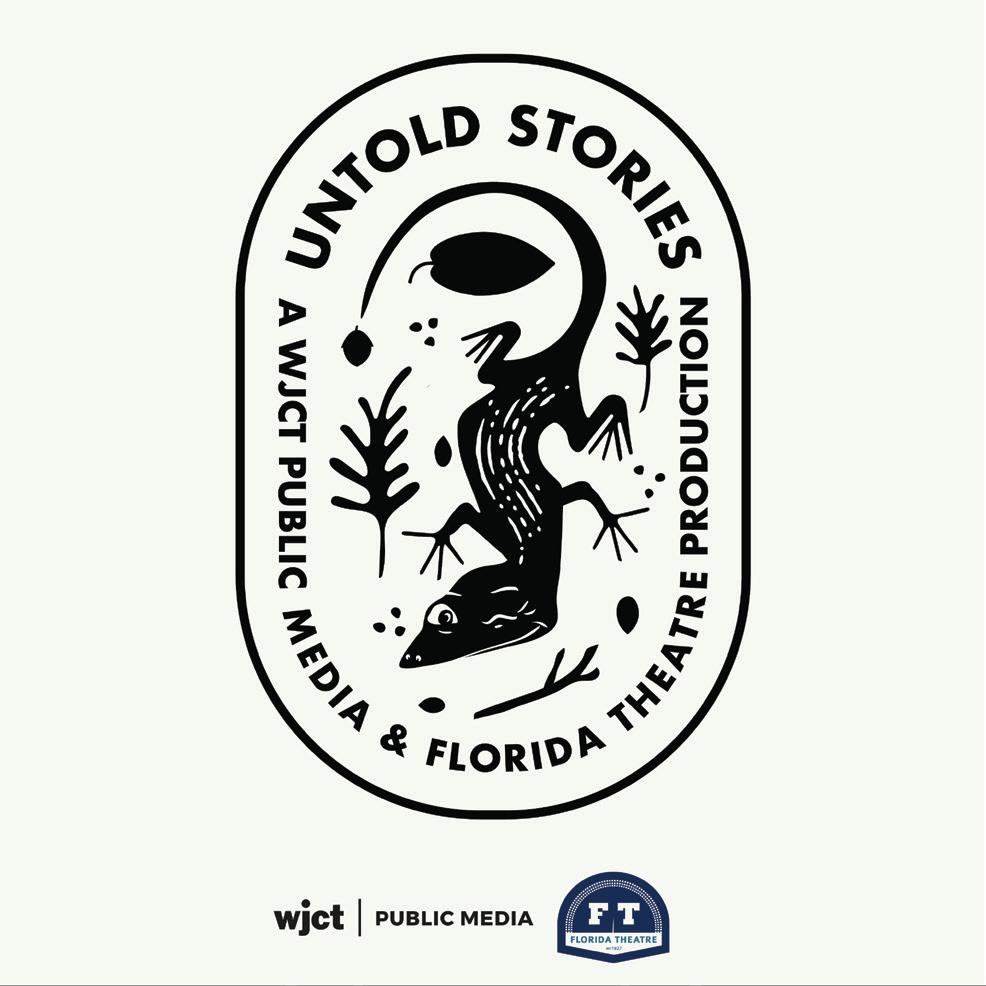
Untold Stories is a Florida Theatre experience, now available as a radio show & podcast. Tune in Sundays at 7PM on WJCT News 89.9 or listen on demand. In partnership with WJCT Public Media
This captivating live storytelling series offers a platform for Northeast Florida residents — artists, tradespeople, shopkeepers, and professors — to share their unique and inspiring experiences. Join us as we explore the vibrant tapestry of life in Northeast Florida, one story at a time.


Bygone Jax tells some of the lesser known stories from our past. In association with FSCJ
Dive into the captivating story of Kalem, the company that revolutionized the movie business in Jacksonville in 1908. From being crowned "The Winter Film Capital of the World" to producing groundbreaking Civil War films, uncover the rise and fall of Jacksonville’s early film industry.


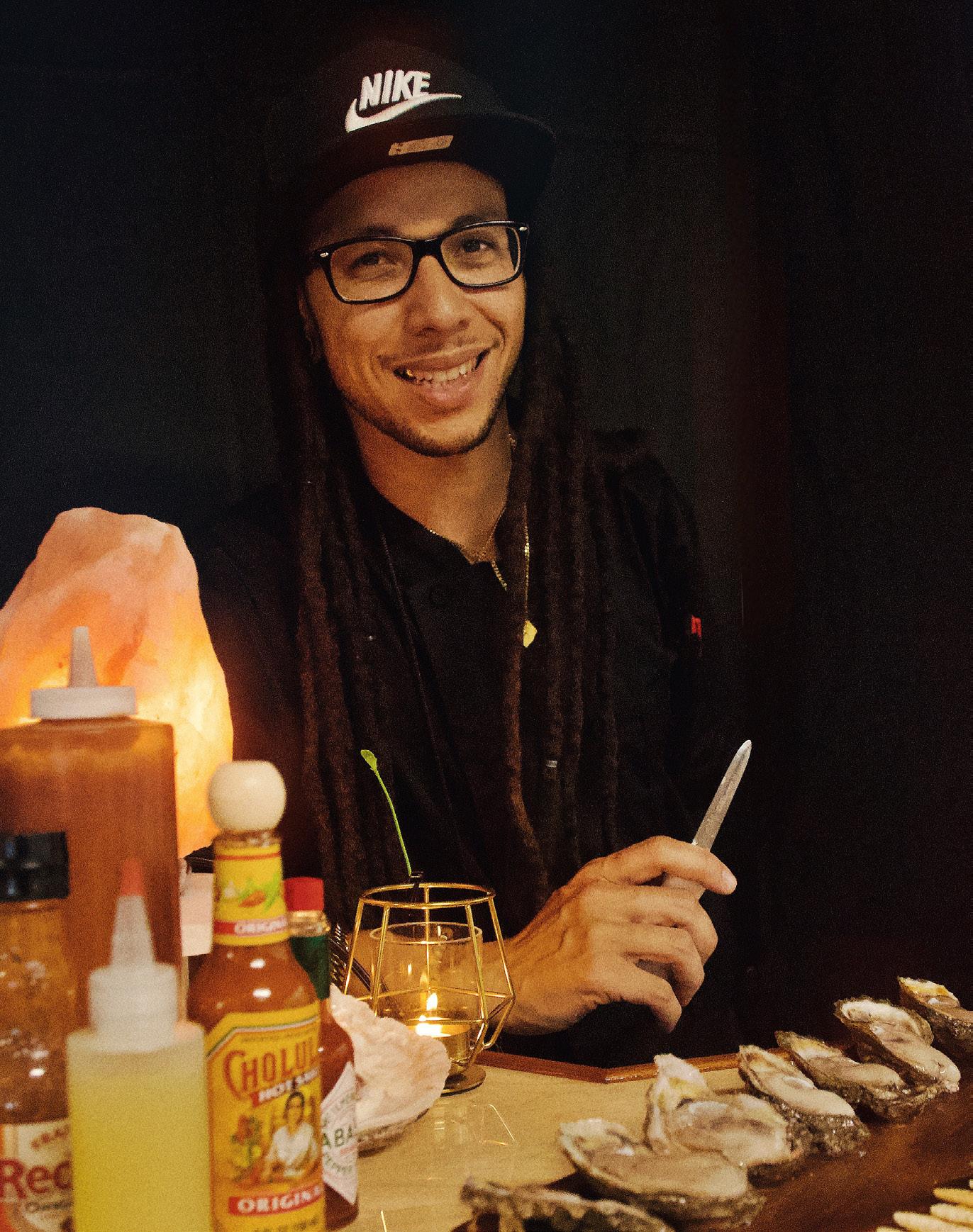

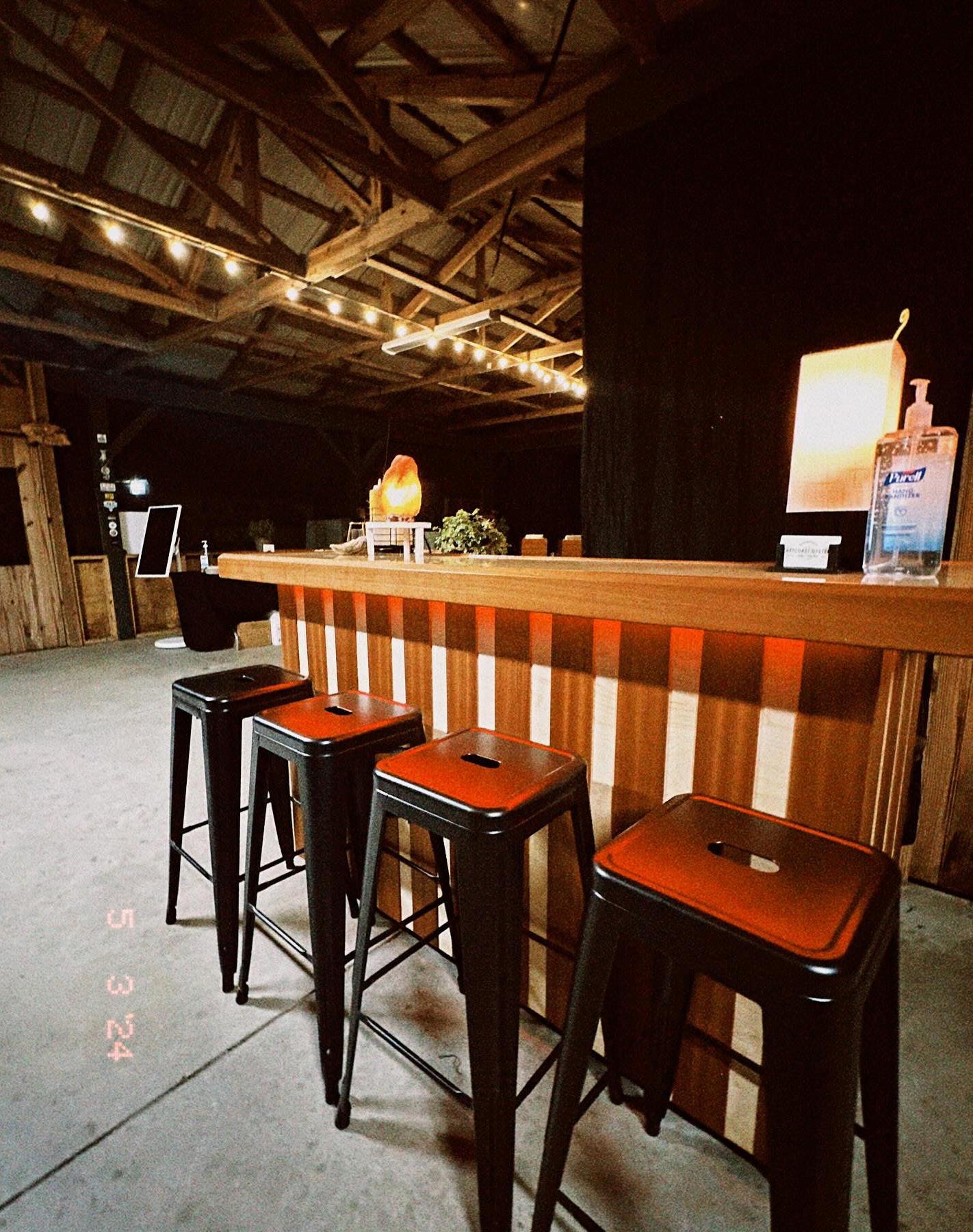



Words by Emily Cheyne & photos provided by Kevonne Phillips
In 2014 Kevonne Phillips was in line at a gas station when he noticed the man in front of him wearing a shirt from BoatHouse Oyster Bar in Destin, Florida. Phillips asked the man if he worked there which led to a conversation about the job of oyster shucking. “It pays great if you can hang. I shuck oysters and it ain’t easy,” said the man in the gas station. He told Phillips they were always hiring because they never last, and if he wanted to check it out, he was willing to train him that day. At the time, Phillips was working as a line cook at a seafood restaurant where he occasionally had to serve oysters but wasn’t that successful opening them. He went with his gut and took the man up on his invitation.
After a week of working at BoatHouse, Phillips began to feel new muscles forming in parts of his wrist and arms, which became quite painful. “They told me one day that means I’m getting better,” Phillips said. What started as a job opportunity became his new craft. He spent that first summer conditioning his body to endure 8-10 hours shifts of shucking. This April Phillips started his own mobile raw bar EastCoast Oysters.
Phillips’ bar is a custom piece built and designed by a friend and Jacksonville-based wood artist. It’s a portable cherry wood and birch-ply unit with an epoxy resin bar top and stool seating.
He gets his oysters from an aquaculture producer in Sopchoppy, grown in the waters of Skipper Bay. “Gulf oysters have always been my favorite. They are salty and petite with a sweeter adductor muscle,” Phillips said. He sources “Skipper Sweets” from Serenoa Shellfish Company.
“To correctly open a live oyster for consumption, it requires special techniques that keep the oyster presentable and free of debris,” Phillips said. The process requires one to place the tip of an oyster knife in the hinge of the oyster and where the knife can get some leverage is where the sweet spot can be found. The goal is to pop the top shell from the bottom, sever the muscle that connects the two, and free the oyster from the bottom shell.
Phillips worked for the catering company Tré Bien Foods for around eight years where he specialized in high-volume dining for guests and music acts. For each event he worked there, he would bring a cooler of fresh oysters. He has also worked in several different restaurants and oyster bars throughout his life and knew running his own operation was long overdue.
“The idea was always there, but I think I just needed more time to manifest exactly what I wanted, as well as save for the initial funding,” Phillips shared.
“With that being said, back in late 2020, my fiance Sarah and I welcomed our daughter Sterling to the world who immediately sparked a major force in our plans for the future.”
The rules for oysters can be very specific for events since they are one of the most monitored foods, Phillips said. He has catered for events like Jax Brunch Fest, Tipper and Friends, Imagine Music Festival in Atlanta, and Welcome to Rockville in Daytona.
During the music festival Tipper and Friends in Huntsville Ala., Phillips was asked to prepare an oyster platter for the headlining artist, Tipper, a long-time favorite producer of his. Tipper was impressed with his shucking skills and ended up giving Phillips the nickname “Shucka Khan.” He said he admired his ability to open the oysters without really looking at them.
Having lived in Jacksonville for the last five years, Phillips has built a strong circle of customers who support his business endeavors. He frequently hosts events in his backyard to show appreciation for his friends and family who support him.
“Fast-paced oyster shucking is physically and mentally demanding but the rewards of becoming an oyster shucker are endless. People love the experience and that’s what it’s all about for me,” Phillips said.
The goal is to continue growing EastCoast Oysters to make it his full-time gig. Currently, profits go directly back into the company for equipment and travel expenses. Phillips wants to cater to bigger events and share his love of the craft with others.
To learn more about EastCoast Oysters, check them out at @eastcoast_oysters on Instagram and at eastcoastoysterbar.com

TUESDAY, JULY 30 – SUNDAY, AUGUST 4
Friday, August 2, 7:05PM FRIDAY NIGHT FIREWORKS! Join the Jumbo Shrimp on Red Shirt Friday, where players and staff will wear red each Friday to support the military, and fans who wear red save $1 on their ticket at the box office or can donate the $1 to charity. Enjoy Friday Night Lites with $2 12oz. Miller Lites, presented by Miller Lite, and be sure to stick around after the game for Friday Night Fireworks, presented by Union Home Mortgage.
Saturday, August 3, 6:35PM BACK TO SCHOOL: SCHOOL SPIRIT NIGHT
back to school time! Throw on your school colors and join us at the ballpark for some school spirit!!
Sunday, August 4, 5:05PM MILITARY APPRECIATION & JOB FAIR Join the Jumbo Shrimp and VyStar for Military Appreciation Night as we are providing free tickets (subject to availability) to all active, retired, veterans and former military members and their dependents. Complimentary ticket may be received in person at the Miller Electric Box Office in advance or the day of the game, subject to availability. Tonight the Jumbo Shrimp are also hosting our first Military Job Fair, with over 15 businesses looking to hire! Kids can also feel like the pros after each Sunday game by running the bases once the field is clear. Plus, face paint, balloon animals & more, presented by Baptist Health.
TUESDAY, AUGUST 13 – SUNDAY, AUGUST 18



Words by Angelica Santini Hernandez

Every year as the summer sun reaches its peak, Jacksonville residents find a delightful and unusual yet heartwarming Christmas in July celebration. Organized by Wolfson Children’s Hospital, this event has become a beloved tradition, bringing the joy and magic of Christmas to the heat of summer while supporting a noble cause. This year’s event, held through July 31, is once again accepting donations to spread joy and support to patients. This annual month-long toy and donation drive. Christmas in July began years ago as a way to lift the spirits of young patients who might miss out on holiday festivities due to illness or extended hospital stays. What started as a small-scale event has grown into a way of engaging with local businesses, volunteers and community.
“The primary goal of this drive is to help families and patients. These gifts help reduce the stress and anxiety associated with hospitalization. What might seem like a small gift to others can be crucial in helping babies and other kids reach important milestones,” Sarah Towne, a child life specialist in the hospital’s neonatal care unit, said.. “These toys play a significant role in a child’s development, as play is a child’s natural language. Bringing play into the hospital helps children explore their feelings and emotions and can help dispel misconceptions about why they are in the hospital. This can be through formative play or medical-based play.”
Another excellent example of community support for hospital programs is the donation of music therapy instruments and other resources.
“At Wolfson Children’s Hospital, our Music Therapy program uses music to support several different individual goals during our patients’ stays,” Caroline Cox, a music therapist at the facility, said. “In our NICU, music therapy focuses on using appropriate music and instruments to support our babies’ brain development during their critical time of growth and development. We love to utilize highly motivating instruments like rain sticks, ocean drums and shakers to encourage our kids to engage and work on various milestones (i.e. physical, cognitive, emotional) based on their age.”
Local businesses and volunteers also play a crucial role in making Christmas in July a success. They donate toys, organize fundraising events and contribute their time and resources to ensure that the celebration is magical. The community’s generosity not only brightens the day for the children but also helps raise funds for essential hospital services and programs.
To make a financial donation, donate gift cards or purchase toys and games from the wish list, visit christmasjuly.com. This year there is an emphasis on toys for infants, arts and crafts kits and supplies, and gift cards in small denominations, which are used as rewards for teens and assistance for patients’ parents. New, unwrapped toys can also be dropped off at Subaru of Jacksonville, 10800 Atlantic Blvd.


Words by Ambar Ramirez and Carmen Macri
AMBAR: We know what it’s like to have a TBR (to be read) list so overwhelming that you end up doom-scrolling instead — especially when it comes to picking a book for the beach. With sand, water, children screaming and music blaring, you need a book that will easily distract you from everything else. That’s why, for this column, we’ve made things easier by compiling a list of beach reads tailored to your favorite genre. You’re welcome.
CARMEN: I’ve said this before, and I’ll say it again: I have pigeonholed myself when it comes to books I read, so I may be a bit biased. Unfortunately for me, the only genre of books that will satisfy my little pea brain is fantasy. I need the stakes to be high. I need drama. I need death. I need enemies to lovers. I simply cannot fully enjoy a novel unless there is magic or dragons or steamy descriptive sex scenes (sorry, Mom). So if this is up your alley here is my beach read for you: “Powerless” by Lauren Roberts. (The sequel, “Reckless,” was just released.) “Powerless” is an epic YA fantasy novel with a fast-paced plot and banter that will have you kicking your feet in the air. It is one of those books that will have you turning the pages so quickly you might start a fire.
AMBAR: For those of you who enjoy the creativity of fantasy but could do without the dragons, fairies and mermaids, so fiction, read “My Year of Rest and Relaxation” by Ottessa Moshfegh. This novel follows a recent Columbia graduate who is navigating living in New York City while suffering from mental illness. In an effort to escape her life, the narrator embarks on an extended hibernation journey of figuring out what’s the worst that could happen if she just sleeps through her life and problems. It’s a bold and sometimes unsettling story that had me crying and laughing by the end of it. And since you will hopefully be resting and relaxing at the beach, I can’t think of a better title to pick up.
CARMEN: Continuing with the fantasy train, if you are looking for the magic, dragons and steamy sex I previously mentioned, let me introduce you to Fourth Wing. This is categorized as a romantasy novel — hence the steamy sex. The series follows Violet Sorrengail as she enters the riders quadrant at Basgiath War College where she is met with adversity for the past doings of her mother. There is danger, friendship, betrayal, high stakes, dragons and enemies to lovers. What more could you possibly need from a book?
AMBAR: Creative non-fiction is one of my personal favorite book genres and also the most underrated. You can truly learn a lot about yourself through the eyes of someone else’s memories. So if this sounds like you, first off let’s be friends, and secondly, pick up “Just Kids” by singer-songwriter Patti Smith. Smith is known for her poetic words and lyrical prose. In “Just Kids,” you follow along Smith’s journey of moving to the Big Apple during the ’60s and ’70s where she navigates the complexities of becoming an adult, falling in love and becoming an artist. It’s an honest and vulnerable story of youth.
CARMEN: For those mystery lovers, I recommend “The Housemaid” by Freida McFadden. This is one of the few times I have strayed from fantasy and actually enjoyed it. “The Housemaid” is a gripping psychological thriller that follows the story of Millie Calloway, a woman who takes a job as a livein housemaid for the wealthy Winchester family. Millie quickly realizes the household is full of dark secrets and unsettling mysteries. With a compelling narrative and unexpected twists, the novel delves into themes of deception, trust and the complexities of human relationships, keeping you on the edge of your seat until the very end.
AMBAR: Typically, if you said your favorite genre is romance, I would direct you to “A Court of Thorns and Roses.”
CARMEN: I could go on for days and days and days about “A Court of Thorns and Roses.” Please do not get me started. I will cry. Please.
AMBAR: But we don’t want to make Carmen cry and that series falls more into romantasy. So instead, if you prefer true romance, let me direct you to “People We Meet On Vacation” by Emily Henry. This novel is a collection of travel memories between the friends-to-lovers Poppy and Alex. It’s a physical representation of the saying “opposites attract” and will leave you booking an out-of-country flight with your best friend.
CARMEN: And here is the only other genre that I have dipped my toes into, horror — shocking, right? And to entirely fit the stereotype, I will be recommending a Stephen King novel: “Holly.” For those who love to read horror novels, I’m sure you are well aware of Mr. King. As I am sure you are also aware of the fact he — for some reason — never knows how to finish a book. But that is neither here nor there. This novel centers on private investigator Holly Gibney as she takes on a complex and eerie case. Known for her sharp instincts and unwavering determination, Holly uncovers a chilling mystery that delves deep into the sinister aspects of human nature.
Dear Dumbs,
I always look forward to your article, but I never imagined that I’d feel the need to ask for advice.
Do you have any suggestions on how to motivate my husband? Here’s the details. I’ve been married for 35 years. For the most part, it’s been pretty great. He’s been a fantastic father to our three children. They’re all out of the house now and doing well.
All he does now is eat, sleep and read. Sometimes he reads 12+ hours a day. I feel a complete disconnect and a certain sadness in his behavior. I asked him if he was depressed and he said that he’s “just tired.”
He recently had his checkup and is very healthy. But he does no exercise or anything social anymore. The only thing he seems to be excited about is his upcoming retirement.
Carlie L. Ponte Vedra Beach
TERRY: Oh, oh, I can’t wait to hear this. Take it away, Shari.
SHARI: A little too close to home?
TERRY: Part of this. Yes.
SHARI: What part?
TERRY: Well, I do enjoy my alone time more than most people.
SHARI: I’ll give you that.
TERRY: My guess is that he’s having a tough time with aging.
SHARI: That could be. I’ve seen you struggle with that a little.
TERRY: A little! It’s a total mind screw. I think we’ve solved the problem.
SHARI: That very well could be it. I hope he feels as though he could talk to you, Carlie, about these feelings.
TERRY: Listen, I’m not diagnosing the guy. I just know it’s a very hard thing to bring up to the person you’re supposed to inspire.
SHARI: Aw, that’s sweet.
TERRY: Shut your face.
SHARI: Carlie, I would start by letting him know he can talk to you about anything under the sun. Especially something that’s of a vulnerable nature.
TERRY: Yes, I believe that something is bothering him, and if he’s healthy like you say, it could be just a dude trying to figure out where he fits in the current world.



Solve this puzzle like a regular sudoku, but instead of using numbers, use the letters
(for the Kingsley Plantation) to fill each row, column and box.
SLUGGER BATTER TRIPLE DINGER WALK-OFF WALK BUNT FASTBALL CURVEBALL GLOVE
L C U R V E B A L L
WLHKMSWZCZ
A H B F E L L O B W
L Z U A C U L Q A A
K T N S E G L D T L
O R T T K G G I T K
F I Y B H E L N E I F P C A D R O G R I
F L C L I M V E X I P E Q L T Q E R V M
Some shrimp can be very noisy. They make loud snapping noises with their pincers.
Shrimp come in di erent colors, which are in uenced by their natural habitat.
Some kinds of shrimp make a short dance while waving their white antennae to entice sh.

